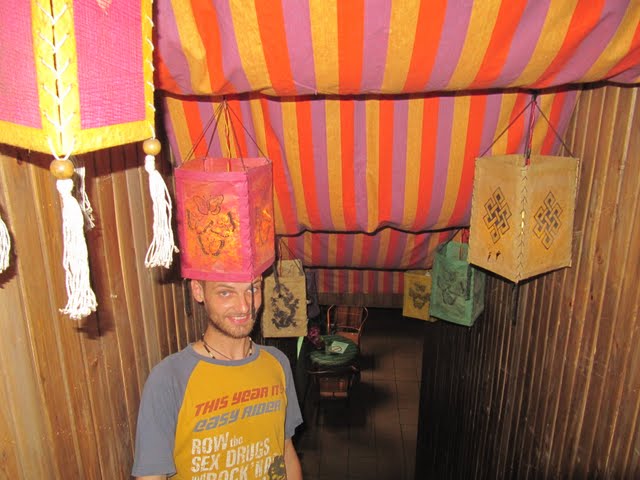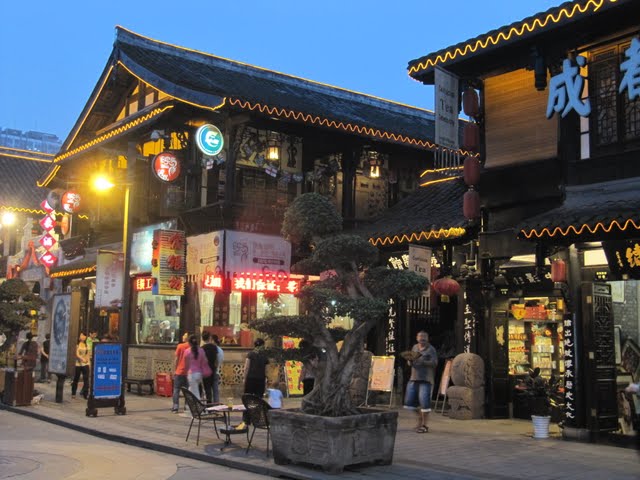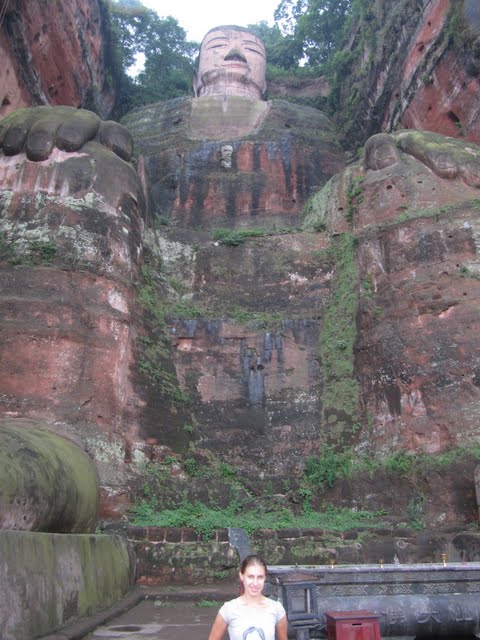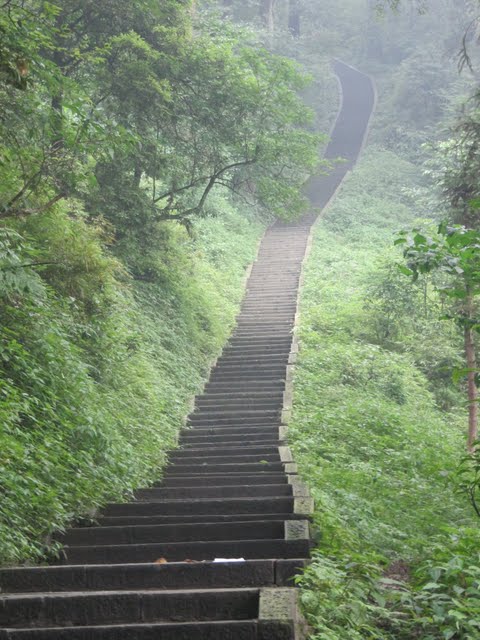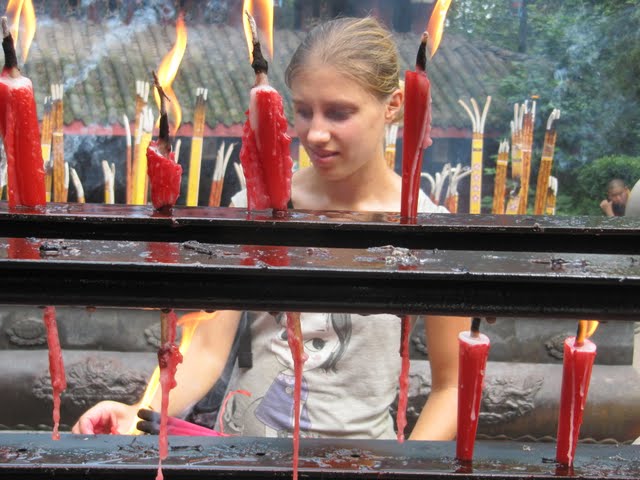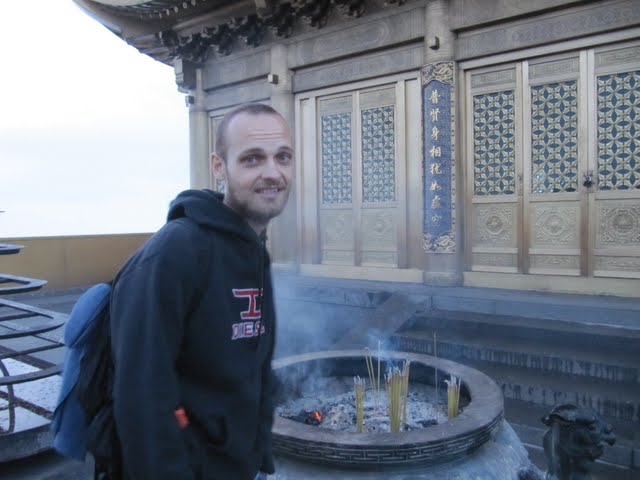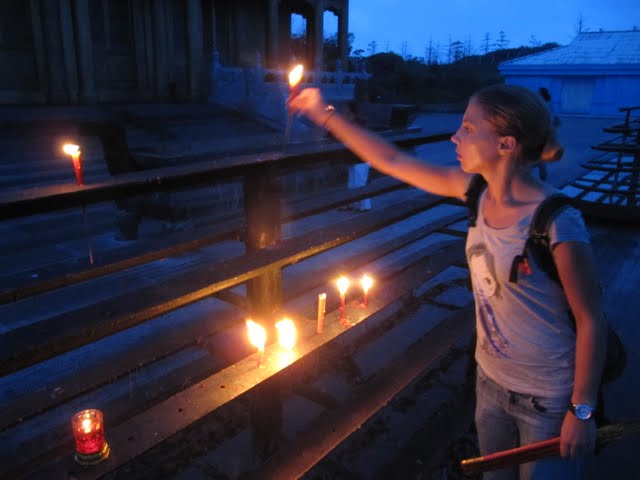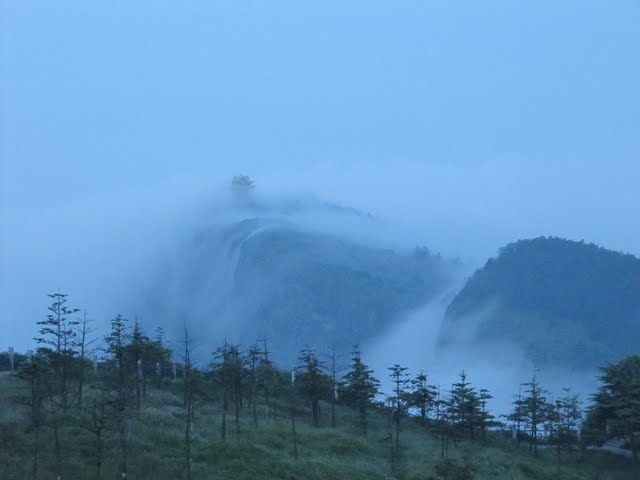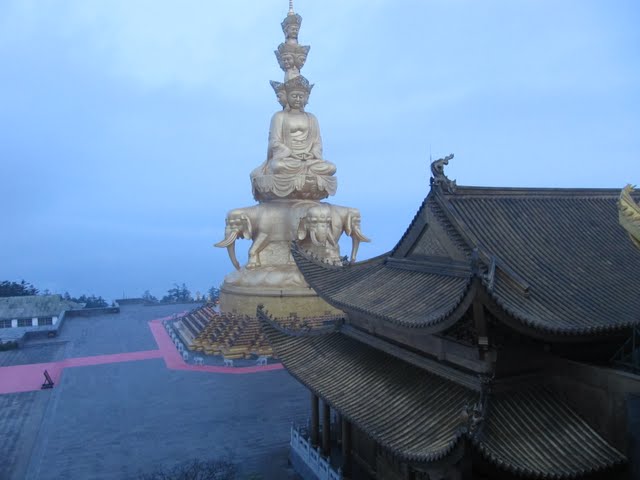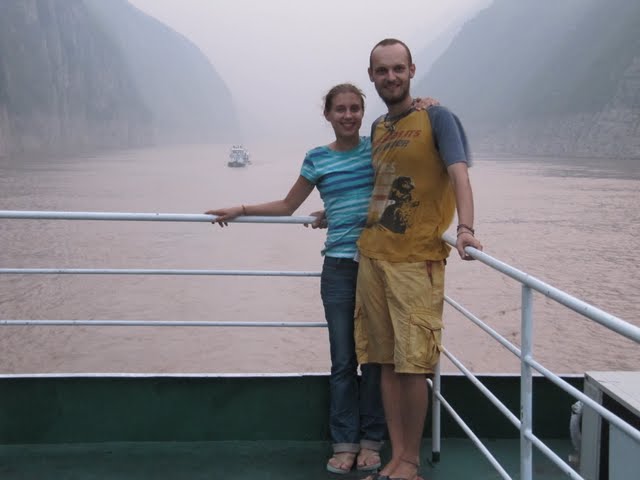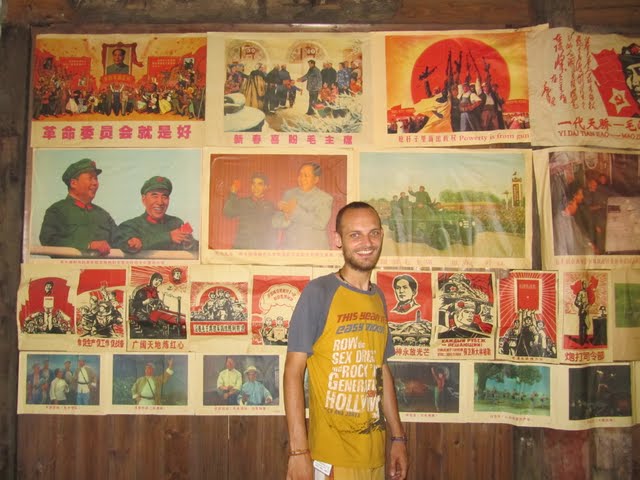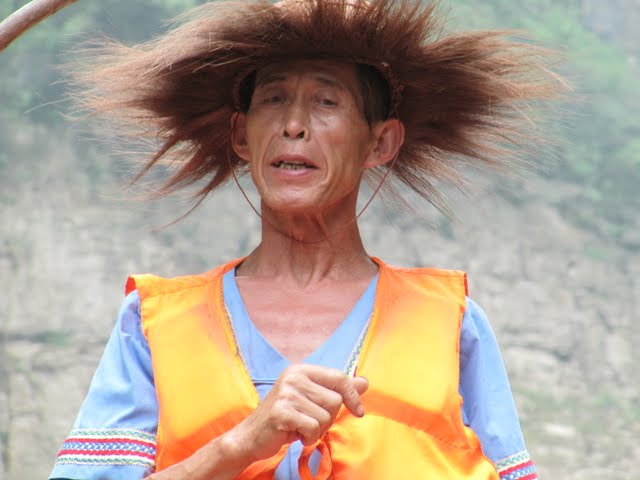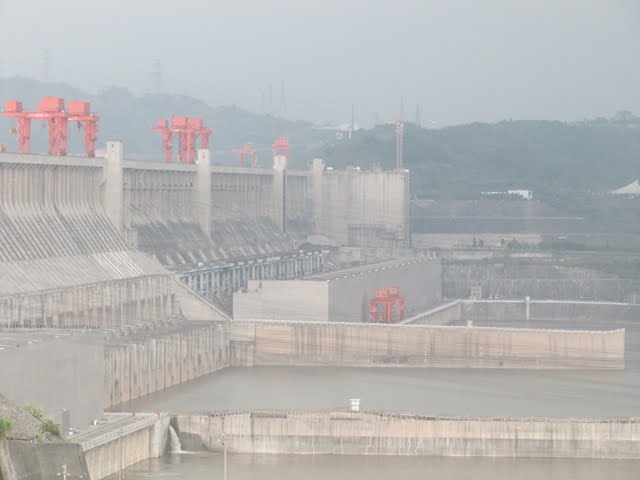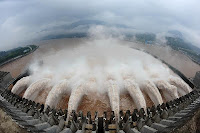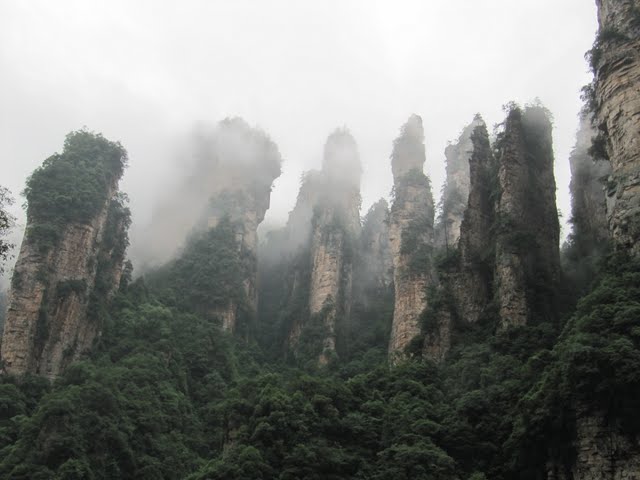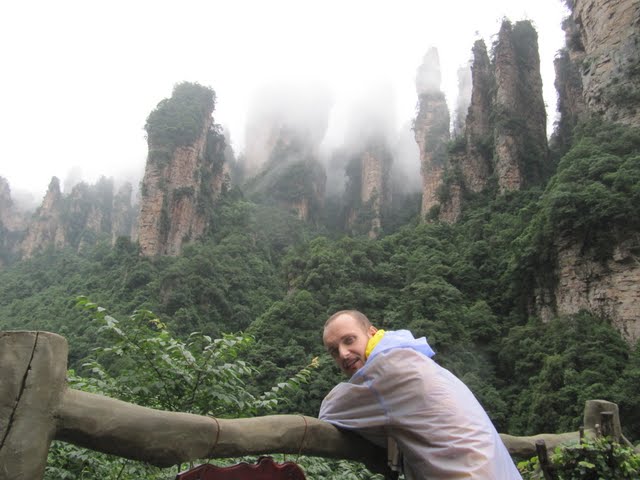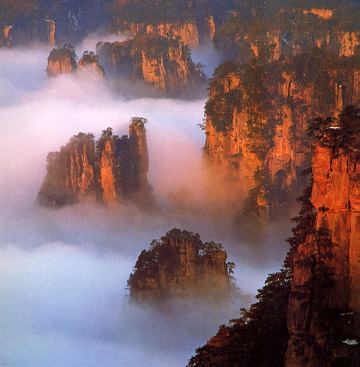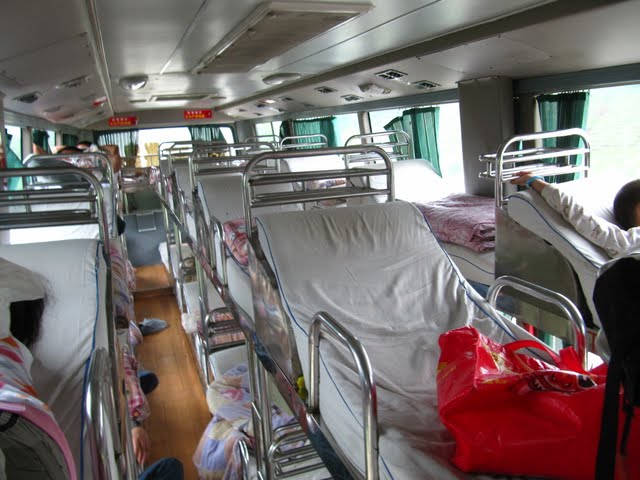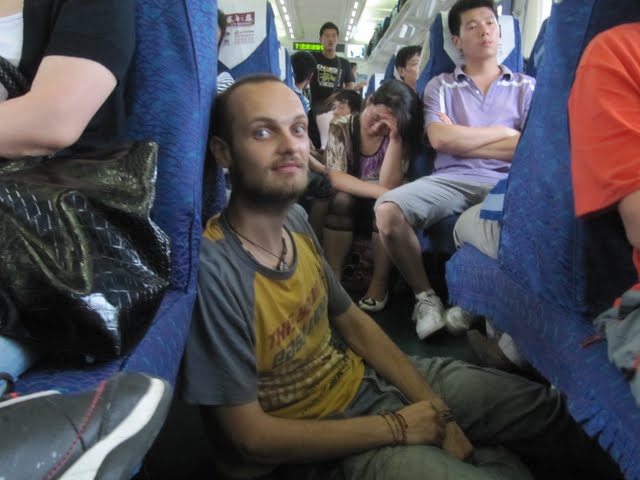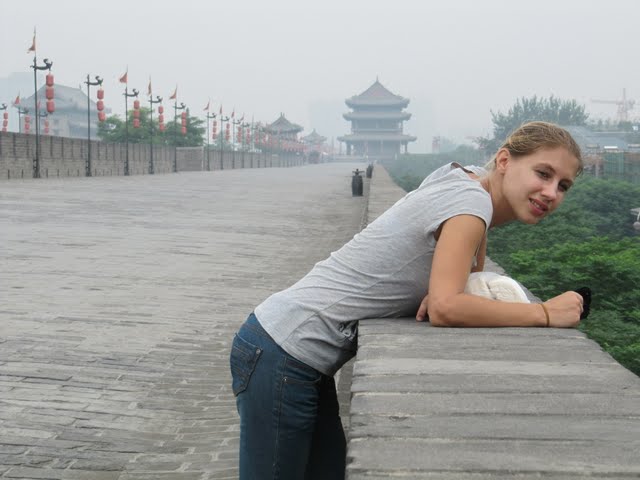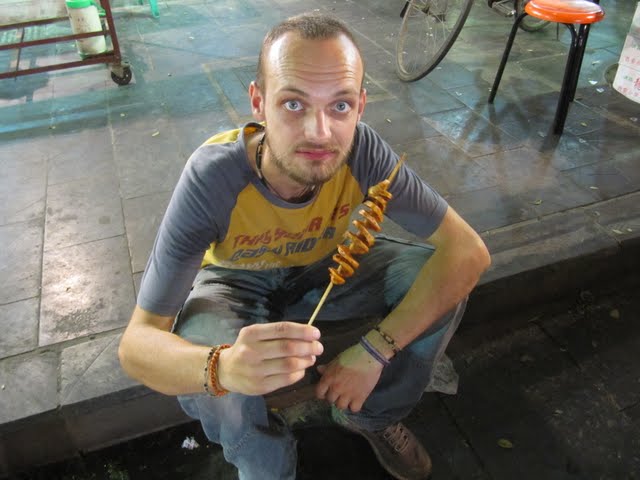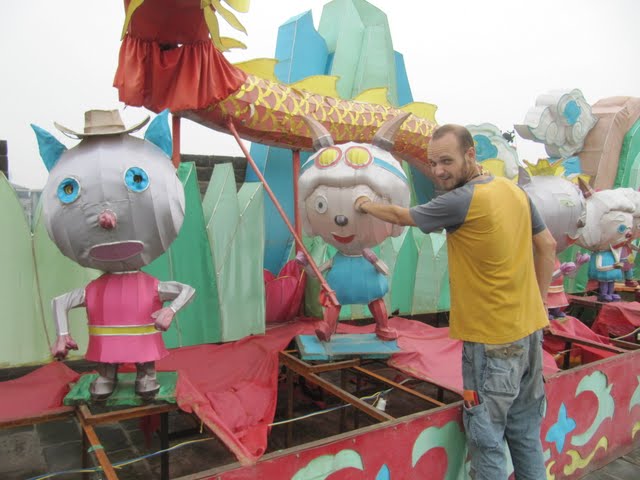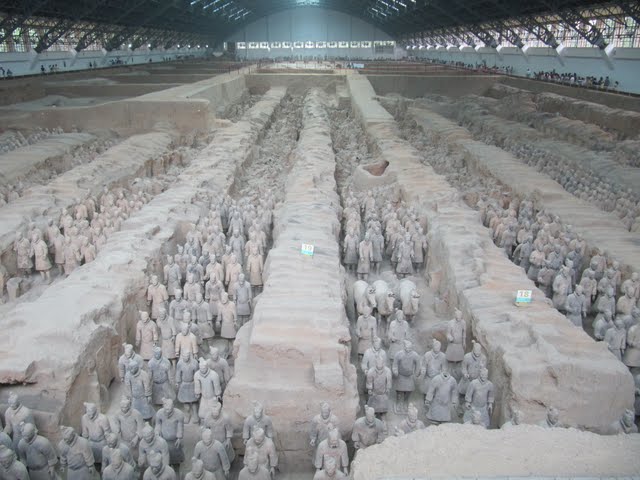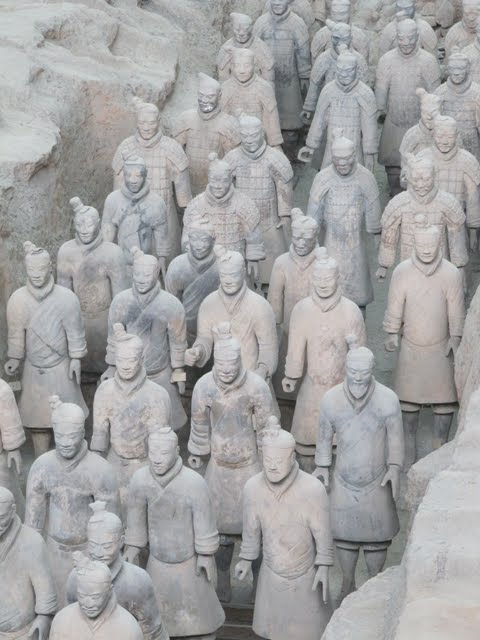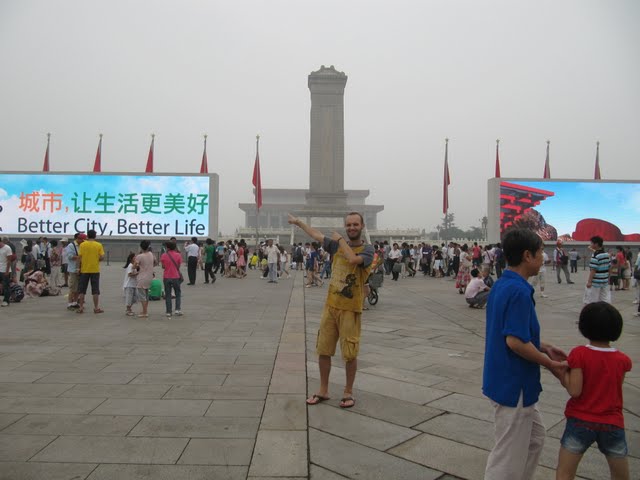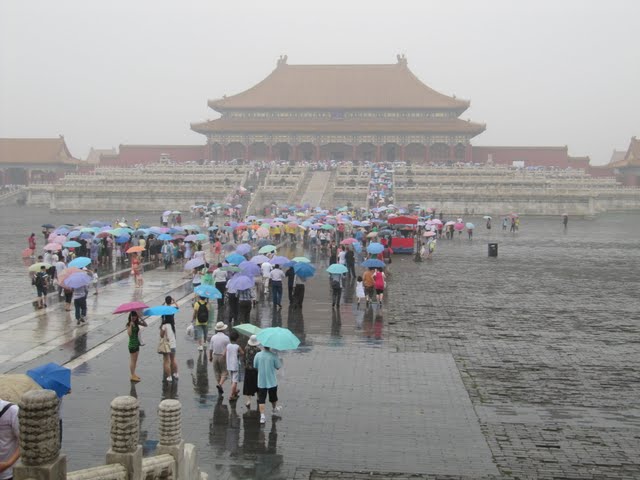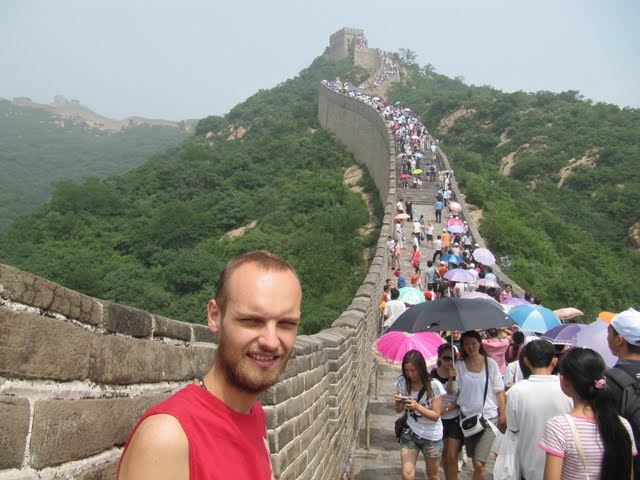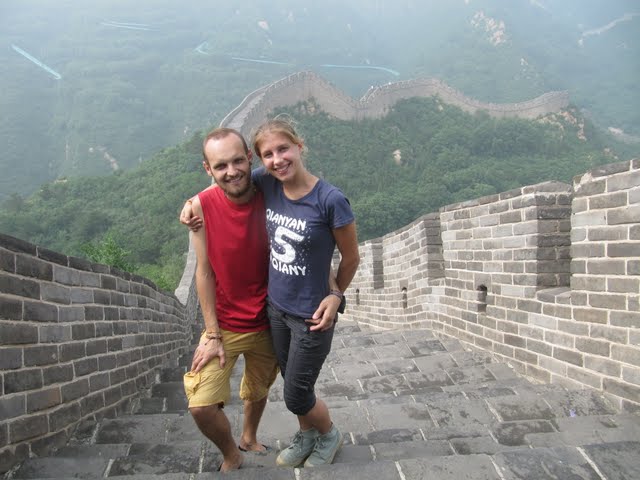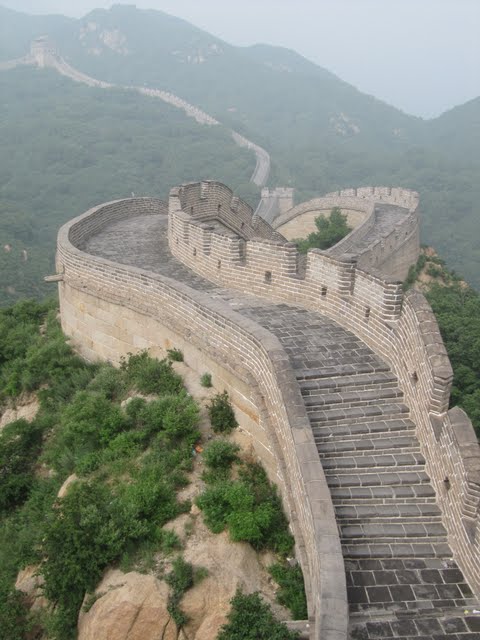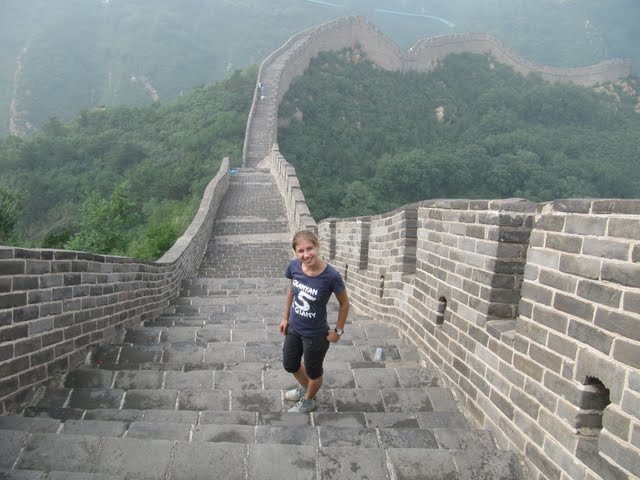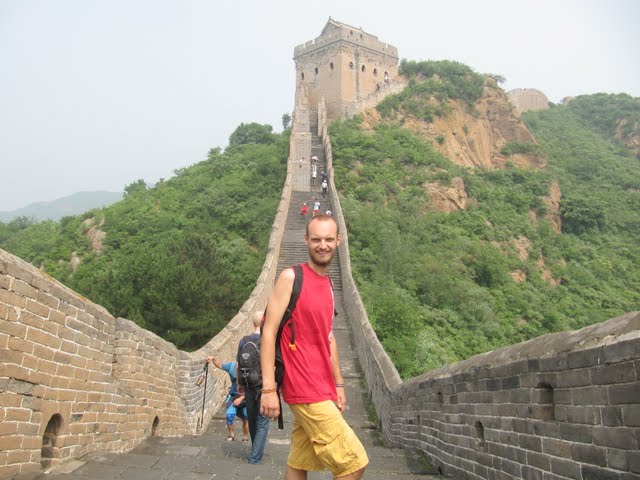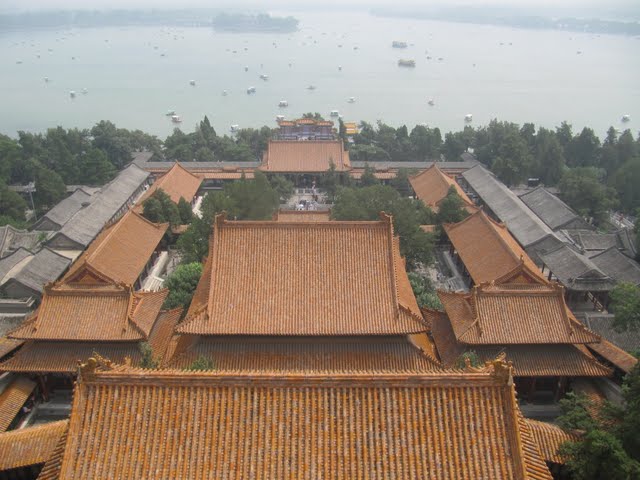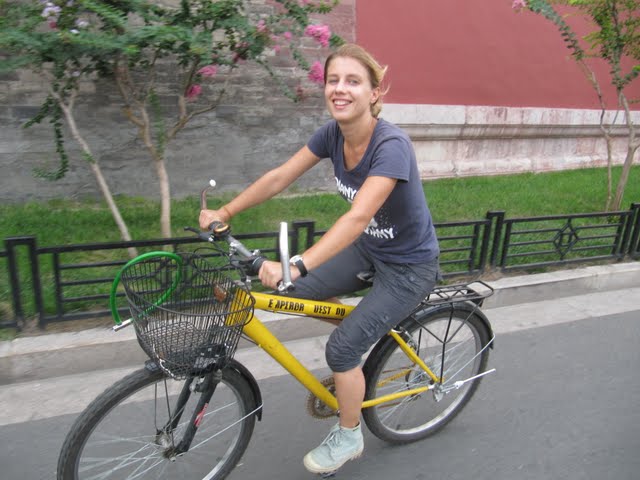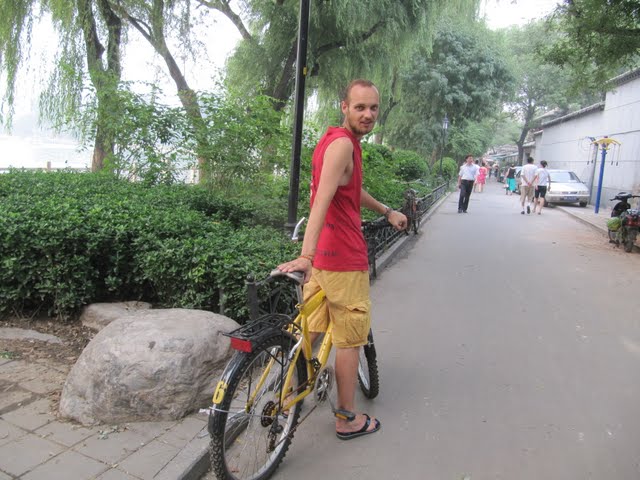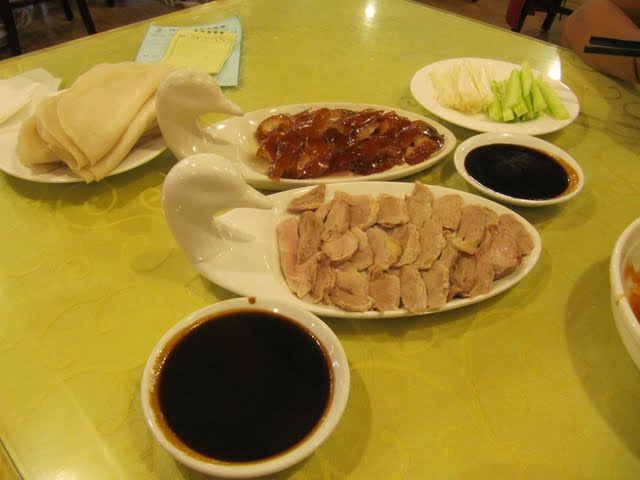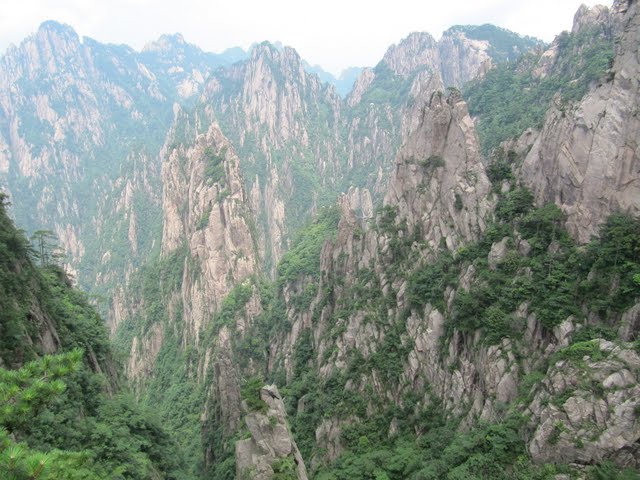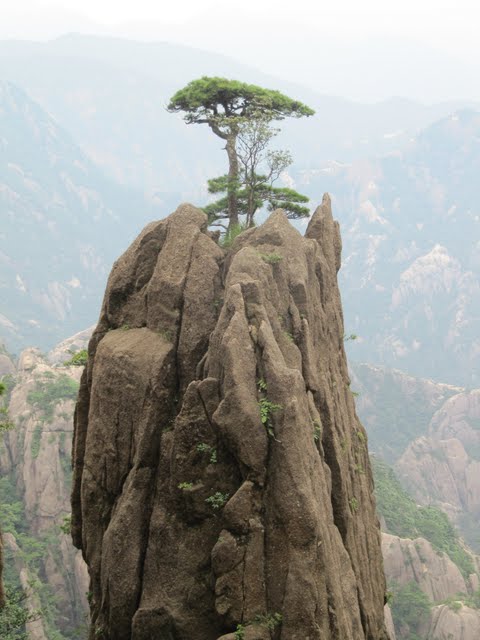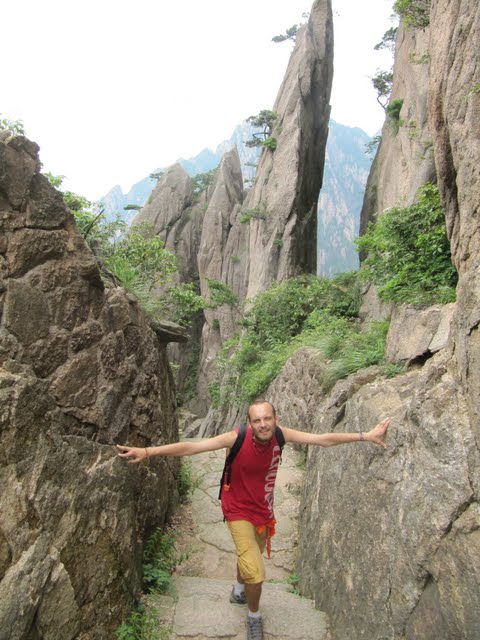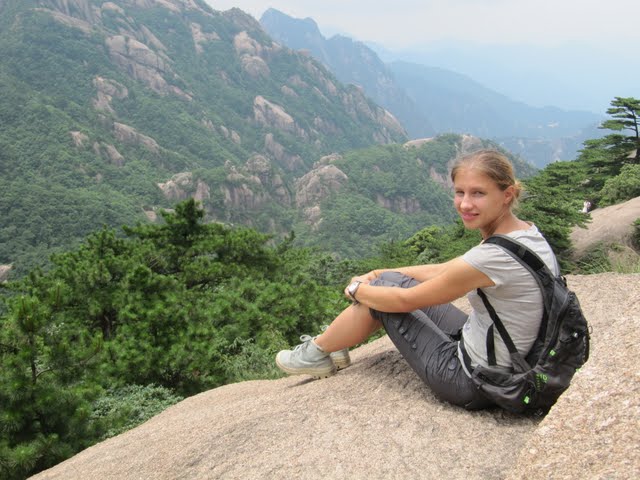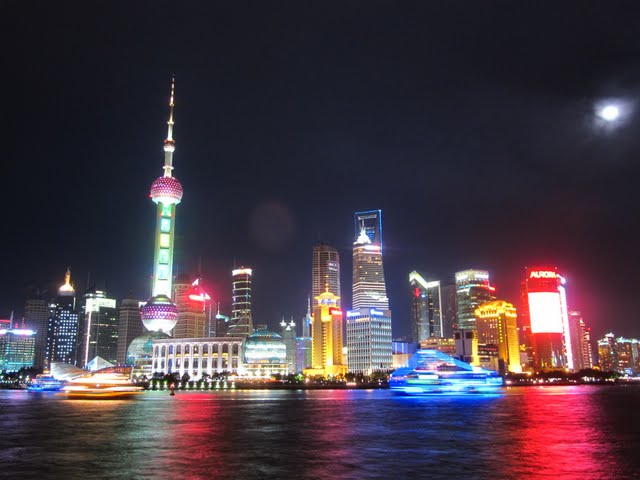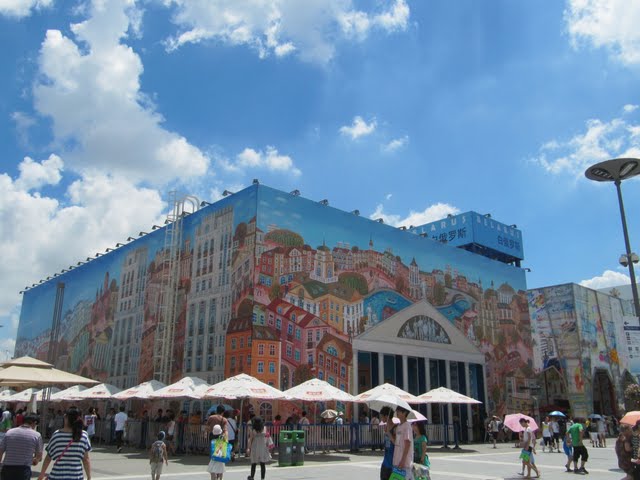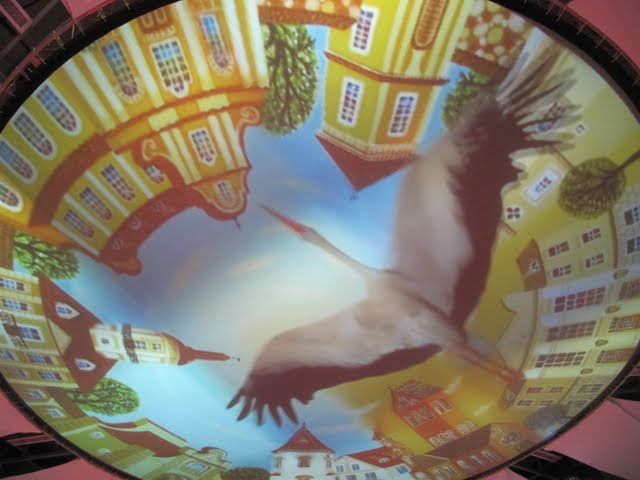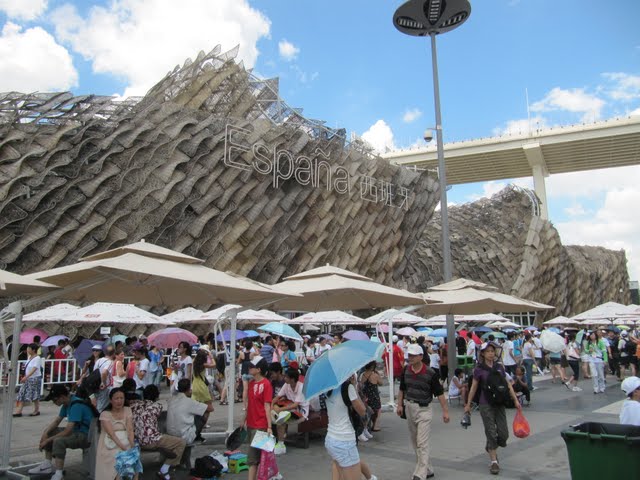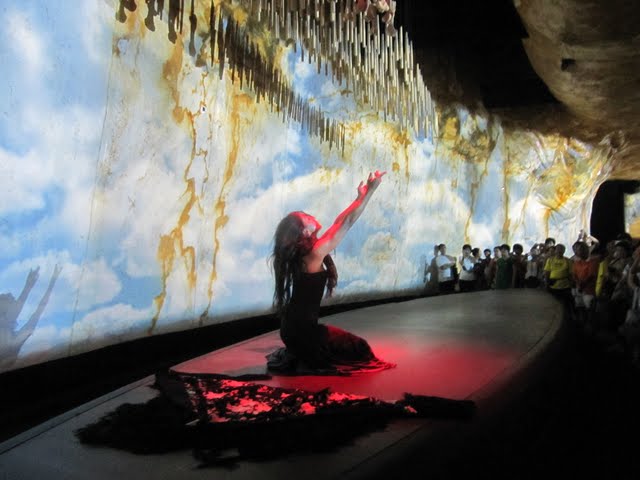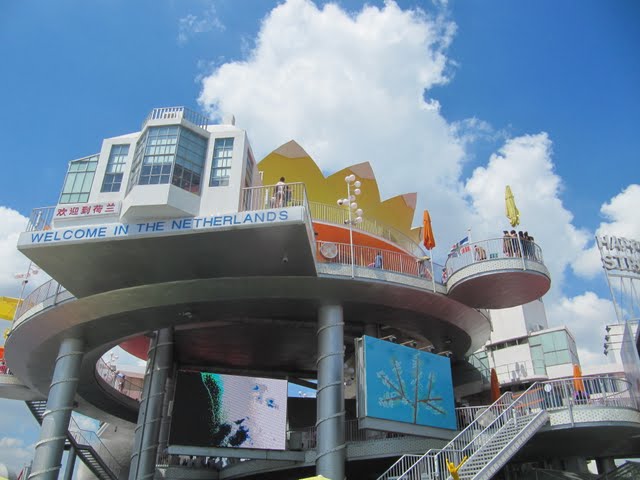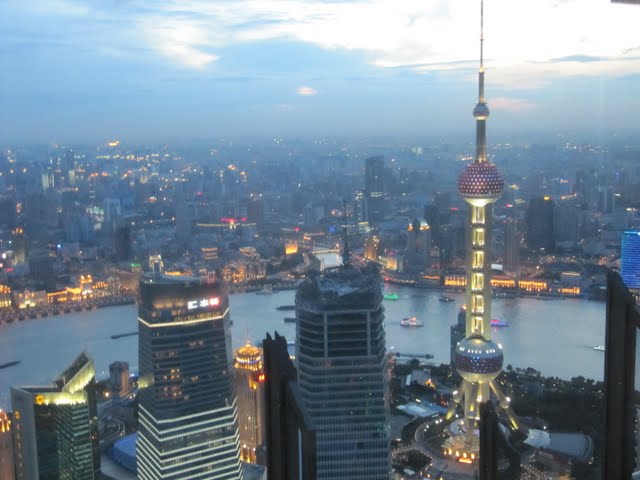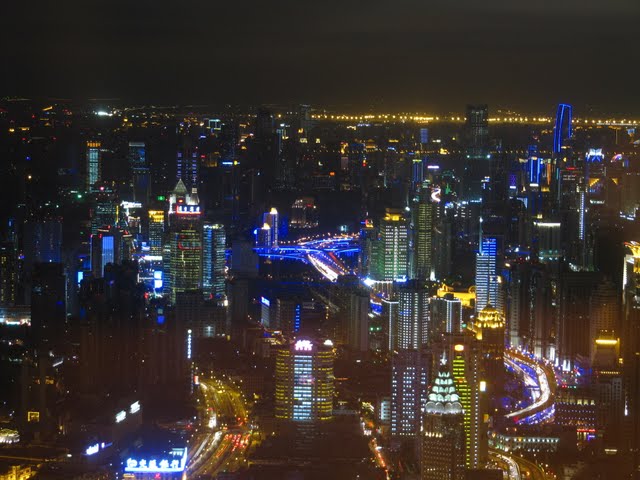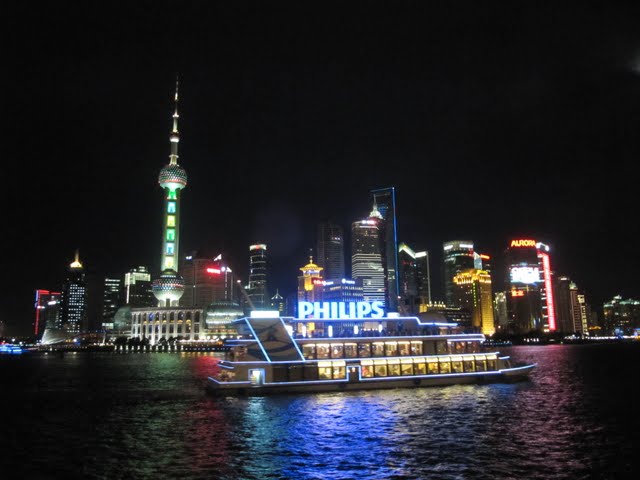We are in China! (我们在中国! = Women zai Zhongguo!)
Flying half Asia to get from Kolkata to Chengdu
From Kolkata, our beloved Air Asia brought us to Kuala Lumpur airport where we had to spend a night waiting for our flight to Chengdu. We were blinded by dazzling cleanliness of everything and seamless airport procedures. Effortlessly we got a 90-days stamp from the very friendly Malaysian immigration officer (it’s the first country I have traveled apart from Russia and Ukraine which didn’t need to enrich my passport with yet another visa).
Chengdu – lovely city, cute pandas
And – we are in China!!! (我们 在 中国 = Women zai Zhongguo!!!) Almost nobody here speaks English as we found out, so it’s either the basic Chinese that I have managed to learn so far or the never-failing body language that we use for communication with the locals. The first impression about China was amazement – at its extremely modern look. We didn’t expect anything like that. And so far everything we see only reinforces that initial impression: the cities 'breathe' at a very modern rhythm - tall buildings, huge screens, neon lights, comfortable public transport infrastructure, people look happy and well-off. Anyone who would expect to find a 'rural China' (like Jordi) would be in for a huge disappointment: it's rather an exception than a norm nowadays. It's still possible to see some peasants in straw hats working on their rice fields and old wooden houses but it's already being preserved as an antiquity (they will even charge you admission ticket to see some of these old villages!).
We spent a couple of days in Chengdu: a very big but super cozy city: very modern with a gorgeous old quarter around Wuhan temple. The first day there we went to see the panda reserve and spent a few hours marveling at the cute clumsiness of these animals, taking a lot of pictures of lying pandas, eating pandas, playing pandas etc. etc. – always with the eternal bamboo in their mouth. What amazed us most is that being so big when grown up, the baby pandas are born very tiny - smaller than a kitten!
Really cute pandas:
Leshan – the biggest Buddha in the world
After Chengdu we visited the biggest Buddha statue in the world, at Leshan - 71 meters of carved river bank cliff. The statue overlooks the confluence of two rivers and was built by a probably very determined and ambitious monk in order for the Buddha to calm the very dangerous waters at that spot.
Emei Shan – endless cruel stairs
After Leshan we undertook a very ambitious adventure of climbing mountain Emei Shan. We were prepared for a tough hike, but this was… 7000 stairs going up through clouds to a very misty summit at around 3000 meters. We started about 3 pm and at the beginning were optimistically hoping that the steep stairs would end some time and we would get a normal path instead. After a couple of hours of going up and up and up on more and more stairs we realized it would be nothing but stairs and started to watch our breath and tempo more carefully. On our way we passed several beautiful Buddhist temples (and stopped in each of those for a very short rest and look around). Since we only got very bad maps of the mountain and the names of the monasteries ( = milestones) were only in Chinese, we had a very rough idea as to where we were.
At about 7 pm the sun was going down and we were still methodically climbing up the endless cruel stairs. We were passing a very big monastery (where we could stay for the night) but our target for the day was to sleep in one of the temples closer to the summit so we ignored all the invitations to stay in the monastery dorms and continued our stairs odyssey. After about half an hour it got dark and we continued with the torch lights. Finally, when our knees and legs were almost announcing a strike, we started to hear human voices: we arrived at a place with lots of hotels!
To our amazement, we found out that the previous monastery was the one which was our initial target – without suspecting it we had walked additional 7 km, making it in total about 22 km trek up very steep stairs in 6 hours (Jordi: one of the toughest hikes ever in my life, believe me, stepping up is much worse than walking up!). We were very exhausted so got a bit annoyed when our hosts at the hotel insisted on explaining something to us in the only language spoken on Emei Shan - Mandarin. Finally after about 20 minutes of linguistic struggling with the help of body language, pictures and the Collins dictionary, we managed to understand each other. The dialogue was roughly this: Our Chinese hosts (OCH): 4 am, 6 am. Us: Ok, what do you mean with this? OCH: You want 4 am - 6am? Us: “What do they want from us? Are they telling us the checkout time? That’s kind of early…” Why do you need to know? (Jordi: between this sentence and the next one there were like 20 ways of showing us what they ment, including maps, drawings, body -language, Mandarin, ohter people, etc. everything exlcuding English. Chineese are so bad at body-language.) OCH: 6 am sun. Us: Aaa, you mean sunrise. You mean if we want to see the sunrise on top, we need to start walking at 4 am. So 4 am start walking, 6 am we are on top, right? ( (Jordi: This conclusion actually took quite some time of “playing” Pictionary!) OCH: Right, right!!! Us: Yes, we will get up at 4 am. Thank you, good night. Great, we can go to sleep now…
Next morning we woke up at
Was the experience worth it? Not for the sunrise as we didn’t see any sun through the thick clouds and there were way too many people who made it there by the same time with the help of the cable car. But it is a definite “yes” for the unique experience of walking in the clouds all the way up to the sky, for the mysterious ancient monasteries all along the way and the amazing statue on the summit, and of course the vigorous workout which is going to come in handy in our future treks in China. It was definitely tough (imagine climbing several Empire State building in one day, and even then you are not close as the Emei Shan stairs are much steeper)… Later that day we realized that it was our first marriage anniversary, so it turned out a very special way to greet it.
Langzhong – the perfect ‘feng shui’ city
After our glorious achievement in Mt Emei Shan, we headed for an old city of Langzhong which was highlighted in the guide as one of the “old faces of China” we should see before it’s too late. The old city was indeed lovely, designed completely according to the principles of Feng Shui (turns out it’s not shui, but sh-way, which is the proper pronunciation of the pinyin writing of “water”), with rows of old wooden houses curled around the river in such a way that wind (feng, disperses energy) and shui (water, accumulates energy) have their proper balance. By a stroke of luck instead of the hostel we planned initially we ended up in a gorgeous hotel that turned out to be a very old building and a kind of city landmark. They gave us a very nice room for the same price we would pay for 2 beds in the hostel – we love low season!
Three gorgeous Gorges (big, small and the smallest)
After Sichuan we headed for Chongqing which is the gateway for the popular Three Gorges river cruises. The gorges are basically gorgeous river bank cliffs and are quite unique type of Chinese landscape. We were the only foreigners on our ship with the rest of it packed with local Chinese tourists. We shared our tiny 3rd class cabin with two more Chinese couples. Our trip also included a tour over the "Smaller Three Gorges" and "Even Smaller Three Gorges" with the boat decreasing in size accordingly.
However, apart from the boat, we have no idea what the "smallness scale" for measuring the gorges was based upon as the attribute seemed quite random, with the very "small" gorges being more impressive than their "bigger" counterparts. (Jordi: Although the trip was nice, the nights in that shared room were something closer to hell than anything... the worst and loudest snoring sound you can imagine was coming all night long from the guy who was sleeping 1 m away from us... I almost hurt my ears trying to sleep with my iPod the whole night trying to make up for the roaring sound!)
Our first train adventure (painful!!!)
On arriving to Yichang we needed to decide where to go next. It was either to go down to Fenghuang, and then up to Zhangjiajie or the other way round. However, as they say “God is laughing when a human being is making plans”. So although we decided to go to Zhangjiajie first we ended up in Fenghuang.
We bought a train ticket to Zhangjiajie and had almost the whole day before departure so we decided to go and see the biggest dam in the world. By the time we reached it, it was all covered in heavy fog and a bit later torrential rain made us run back to the bus station. However, we had enough time to marvel at this engineering wonder. Later on TV during all this news about heavy rains and deadly floodings in China, we saw a lot of images of this dam working at its full capacity while pushing through tons of. According to the proud statements of the Chinese, it has successfully passed the biggest test since its creation.
We took a train that was supposed to deliver us to the base of the most beautiful mountains in the world next morning at 5 am, but half way through our journey, in the middle of the night, our train stopped at some station and remained there for the next 2-3 hours. At some stage we saw the Chinese discussing something in a very agitated way after some announcements and we saw people leaving the train. We started asking around and managed to get as much that the train wouldn’t go to Zhangjiajie. People were still getting off and after some hesitation we left our precious seats (there were a lot of people without a seat on the train) and followed the leaving mass. We were waiting next to the rails in the dark for another hour watching the Chinese running to and from the train as the conductors were changing their travel advice. Sleepy, exhausted and alienated from the rest due to the language barrier, we were not sure what to do. In the end we had to go back to the train (where we had seats before and now had none) to spend another couple of hours trying to sit on our bags amid the never-ending trolleys of snacks and sacred noodles served by Chinese railway staff. We had to get off at Chengde which was the only place where the train could deliver us as the rest of the rail track was not accessible due to heavy rain. Once in Chengde we got compensated for 1/8th of the ticket price (as opposed to 1/2 of the distance done) and went to look for buses.
Fenghuang – beautiful ‘hype’
Since the original plan to arrive at Zhangjiajie very early was no longer feasible we decided to go to Fenghuang (that’s where God was smiling probably). It turned out to be a very charming cozy town stretched along a river, with very old houses looking like postcards, with lots of lights and the usual red lanterns. The only disappointment was finding out that half of the Chinese nation came to enjoy the city at the same time as us. We figured that the place is probably the recent hype with the young cashed-up Chinese. But despite having to walk in a packed human stream, we did enjoy a lot the vibrant warmth of the place. The Chinese were sailing down the river intricate candle constructions (nothing like their simple Indian counterparts on the Ganges), savouring all sorts of local delicacies and chilling out in trendy bars and karaoke places. We popped into one of those after a stroll along the river and finally tried some of the Chinese rice liquor (definitely tastier than tequila).
Avatar is in China!!!
Next day we left by bus for Zhangjiajie. What I knew about the place was that it’s a very beautiful natural park (according to Lonely Planet). What we didn’t know about it is that it was… Avatar!!! The whole morning it was raining very hard and we were leaning towards a lazy day in the hostel instead of the wet adventure. However, when it dawned upon us what this place was, all traces of hesitation were gone. The first hints came from the images displayed in the huge screen at the entrance area. All the further boards displaying the filming of Avatar and parts of this unbelievable mountain resonated a lot with the initial hunch, until we finally confirmed that we were in Avatar in the cable car that we took up to the highest peaks. Through the glass of our cabin we saw the thin rugged peaks rising all the way from the bottom to the sky in the weird uneven shapes, in such a way that at times it looked like they were pieces mountain simply hanging in the air (just like in the movie!). And although "flying" the cable car is nowhere close to flying a dragon and only the close peaks were visible, the impression was simply awesome. Afterwards we walked down to the base through very gorgeous even though less impressive mountains. Since leaving in Avatar is pretty expensive these days (imagine paying 35 euro every time you want to enter your habitat), we had to leave it. So next day we took an overnight bus to Xi'an ("western peace"). After a quite uncomfortable night in a coffin-like sleeper seat, we arrived very early at this ancient capital of China, still guarded by its original wall and the whole army of terracotta warriors.
We borrowed the below photos from the web since we didn't manage to get any decent pictures ourselves due to heavy rain. This is just to give you an idea just how awesome it is:
Chinese railway booking system – prehistoric, inefficient, corrupted
At Xi’an station we had our huge disappointment about the Chinese railway booking system which turned out to be extremely prehistoric. Booking tickets which was so easy in India with the online system turned out to be a next to impossible task here in China. To start with, they don’t have any online reservation system (we thought there is one in Chinese but none of the hostel staff who book tickets for backpackers knew about it), so all tickets have to be purchased at physical counters. Second, they are not able to book tickets for the journeys starting in the cities other than the one where you are located at that moment. In Chengdu we were hoping to reserve all our tickets but were told it might only be possible from big cities. And finally, you can only book tickets 10 days in advance which means that for people traveling through the country you only have to hope that you might have a seat left by the time you reach the place from which you have to make a long journey by train. They are always ready to sell you an unseated ticket but that means that for the whole number of long hours you will have to stand/sit in the coach passage, making way for the continuous stream of people (going to and from the toilet, to get some hot water for their noodles) and trolleys (with snacks, toys, reading material and all sorts of useless things that only bored people would buy). So getting back to our booking ambitions, we wanted to buy a ticket from Xi’an to Beijing (departing in 2 days), Beijing to Shanghai and Shanghai to Hongkong. The first one was physically possible to purchase but there was not a single seat or berth left, so we got 2 unseated tickets for a journey of 12 hours. And the other two were not possible of course, since we were neither in Beijing nor in Shanghai (and didn’t have a teleportation device to get their to get some tickets… although if we had one we could just use it to skip all this train nonsense, of course).
Xi’an and its warriors
Well, back to Xi’an. On arrival after trying a couple of fully booked hostels we found one that turned out to be great – cozy, nice location (in the heart of Xi’an, in Bell Tower square). During the next two days we went to see the stone soldiers and marveled at the hundreds of unique faces, staring back at us from the excavated pits, and walked the whole perimeter of the city in top of the ancient Xi’an wall. From top of the wall you can see the whole city which creates a striking contrast to the ancient stones you are walking on. To make it even more entertaining (and probably justify the - as always - expensive entry ticket), on each gate and along the wall you can see various expositions. We walked the complete 14-km circle in about 2 hours and didn't meet any other 'hikers' as the rest of the tourists opted for a much faster biking option.
Beijing – modern and old
The train Xi’an to Beijing was a real test to our endurance which we passed with honours (12 hours without a seat!!!) and the next day we even managed to explore the main Beijing attractions. Beijing somehow turned out to be much quieter than we expected. Tiananmen square (the biggest square in the World) was packed with people but very peaceful, with the Chinese proudly watching the patriotic images streaming at them from the two hugest plasma screens in the World. They did let us into the Forbidden City (quoting LP: “In ancient times the price for unsolicited entry was instant execution but these days 100 yuan would do”) where we spent the whole afternoon walking through the huge emperor’s courtyard. This was the place where we got our baptizing with the Chinese “umbrella” culture, although this was the first and only time when they were using their umbrellas because of rain (from then on it has been the sun). On that day we learned that ability to avoid being poached in the eye by umbrella spikes is a very useful skill here.
The Wall.
The next 2 days we visited two different sections of the top wonder of the seven new wonders of the world – the Great Wall. The first visit to the Badaling section was a real test to our endurance against umbrella’ed crowds and the elbows, but at the end of the day it was worth it as this was the most photogenic part of the wall and we also managed to enjoy some quiet peaceful contact with the wall between the last two watchtowers where the crowd doesn’t venture (since the tour guides don’t include it!). The next day’s Jinshanling section was “for the soul” (as opposed to Badaling’s “for the pictures”), as this is a non-touristy part (the millions of Chinese that go to the Wall go to Badaling). The logistics chain of getting there was the only problem as there were many links in it, some of them being total gaps in the public transport network. Getting there, we almost fell victim to our first and only (so far) Chinese scam – when we almost reached our first stop by bus from Beijing we were virtually pulled out of the bus by some guys shouting “Jinshanling, Jinshanling”, so half awake (it was very early so we dozed off on the bus) we followed them. Of course, they turned out to be taxi drivers offering us expensive transportation services for the remaining connections. We were taking a short walk to shake them off so that we could take time to think and discuss what to do next when we noticed that another foreigner was pulled out of the bus in the same unceremonious manner. That’s how we met Wim from Belgium who was on a business trip to China and was using the weekend to see the wonder. The combined capacity of our three brains managed to get us out of that scam unharmed (to the huge annoyance of the taxi drivers). We were in the middle of some very remote district so we took a short walk and stopped at some design centre where people where having some champagne-ed presentation. The reception guys surprised us by immediately on seeing us (before we had time to open our mouths) extracting a piece of paper from underneath the desk with precise instructions about how to get to Jinshanling. We figured that they probably see a lot of “lost-looking” foreigners popping into their building in the hope to at least find out where they are. As we suspected, we got off the bus too early – we had to reach the bus terminal where we could change to a shared minivan. So we took the same bus again where for fear to miss the correct stop or get off at the wrong one I kept asking people in my Chinese whether the bus will take us to the bus station. They kept confirming to me that it will, and it did. Funnily enough, the taxi drivers where the first people meeting us at that terminal, trying to convince us that no minivans where going to the Jinshanling. But stubbornly doing further asking got us to our destination. The Wall in that part was the kind of encounter I was looking for (ever since I first dreamt of it) – peaceful, beautiful, impressive, very rugged and unreconstructed compared to Badaling but really authentic.
Next day in Beijing we visited the overcrowded (with the usual umbrella crowds) but very beautiful Summer Palace (the summer playground of the emperor’s court). The afternoon after the palace we rented two of the nine million bicycles of Beijing and biked all along the Tiananmen square, Forbidden City and some hutongs (ancient neighbourhoods built by Mongols). We finished the day at a restaurant that was shouting at us “Roasted Duck” specialty (trying the famous pekin duck in Pekin was a must).
Huang Shan – the yellow mountain which is not yellow
Next day we spent 20 hours in a seat traveling to the Yellow Mountain, labeled as the most beautiful mountain of China. (After we were told that going by train from Beijing to Shanghai at that time ( = Expo 2010) was as impossible as doing the same itinerary by space shuttle, we changed our plans a bit and decided to first go all the way down to Huang Shan (Yellow Mountain) and then a short journey by bus to Shanghai). We arrived at Huang Shan Shi with 2-3 hours delay so we had to postpone the trek till the next day. It did turn out to be a very beautiful mountain, comfortably equipped with stairs carved out in the mountain surface, which made it possible to walk on top of cliffs which otherwise would be accessibly only to the world’s most skillful climbers. It was very beautiful but in a way different from the impressive Zhangjiajie (Avatar). In some places it looked like a “younger brother” of that one. Probably it will look the same when it ages even more but otherwise it was mostly these huge round smooth rocks (definitely not yellow!). (Jordi: We knew that Huang Shan had also steps all the way up, but after climbing up and down all the way, we ccould say that it is no way close to Emei Shan!)
Shanghai – financial artery of China and one of the world’s most gorgeous skylines
Next day we took a 5-hour bus to Shanghai, this vibrant modern city with one of the world’s most famous skylines. Right now it’s hosting the World Expo which is maybe the reason for the truly overwhelming crowds in its centre around the Bund and French Concession. But despite the crowds we couldn’t help enjoying the magical vibe of this city with all its shiny skyscrapers, neon lights, huge screens and happy crowds. Surprisingly enough, the city metro was unexpectedly quiet as well as extremely clean, new and comfortable, in short “a dream” (Lonely Planet).
The Expo – “dress to impress”
The Expo is occupying a lot of hectares along the river and is a really interesting exhibition for those who like design, culture and theme parks. By the end of the day we did manage to fulfill the program we had in mind, which was to visit the China, Belarus, Spain and the Netherlands pavilions, had a look at the exterior of almost all the pavilions and visited some extra ones which had fast-moving queues (like Nepal, Cuba, Vietnam). I was hoping to visit the Japanese pavilion (which from the outside looked like a ridiculous purplish girly dreamy-creamy spaceship), but it had a queue of 5 hours in the morning and 3 hours in the evening when we were leaving. We are guessing that the Chinese are really curious to have a glimpse at how their ‘small big’ brother is doing. Our impressions about the pavilions: China was all big show off meant to impress – the biggest pavilion, biggest and fanciest screens etc. etc. but somehow it didn’t reflect as much about the Chinese culture as we would expect from this kind of exhibition.
Belarus surprised us with very colourful exterior and interior, which were covered with images of Minsk and Belarusian landscapes painted in a special happy style. Chinese kids were having a lot of fun inside under the globe-like screen which was showing the cranes flying over a very blue sky (cranes are a symbol of Belarus, and there is even a theory that the adjective “Belaya” ( = white) in Bela-rus (“white Russia”) signifies the white wings of these beautiful birds flying over the country). The videos shown to the audience were quite true and conveyed the culture (as I know it).
The Spanish pavilion was the most interesting we saw – with a flamenco dance performance, beautiful videos of places and traditions, so it did convey the culture. The only upsetting thing was the total absence of catalan elements of culture in the videos and photos. The nice “perk” of the visit to the Spanish pavilion was that we were able to triumphantly march past all the I-don’t-know-how-many-hours queue, as with Jordi’s Spanish passport we were admitted through the VIP entry!
The Dutch pavilion was a huge disappointment – a bleak white structure, without any cows, cheese, wooden shoes or orange colour among elements of decoration. The videos that were showing images of Holland were coming from a lonely screen that was directed at passers-by rather than the visitors of the pavilion. Oh yes, there were some tulips inside but they were placed in a glass house off the common itinerary. (Jordi: it was really ugly, and I am really sorry to say it, but that is the truth ;) ) We finished our day at the Expo by sinking a (very bad) mojito at the Cuba pavilion which essentially was nothing but a bar with salsa music where the Chinese were treating themselves to caipirinias, cuba-libre’s and mojito’s.
Talking about bars, here in Shanghai we went to one of the highest bars in the world. “Cloud 9” - a luxurious retreat from the chaos of the city beneath - is located on the 87th floor of the Jin Mao Tower and serves drinks at a price of any single bar in Stratumseind, Eindhoven. If you want to sink into a pleasant state of contented joy, get relaxed and inspired, just come here and watch the city transform in the dusk hour, gradually emerge after sunset in all its glittering magnificence of shiny skyscrapers, lit-up bridges and Christmasy boats surfing the river. (Jordi: I must say that the first day we tried, they didn’t allow me to get in because of my sandles!! It turns out that there is a dress code... but the second day, I put on my long discolored jeans and my trekking shoes and I passed the door test! We managed to spend 3 hours in this very stylish bar which had a minimum consumption of 15 euros each... so we ordered a couple of cocktails, a fancy ice-cream and we got peanuts for free! :P)
